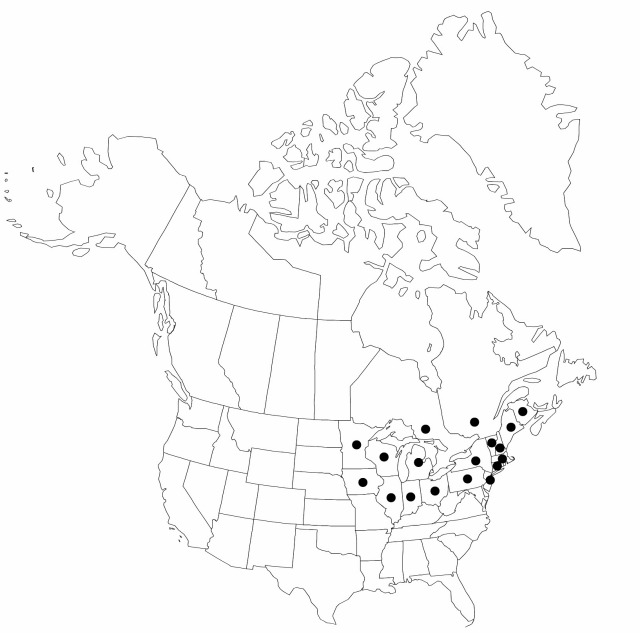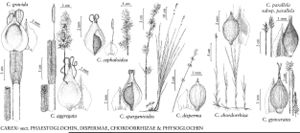Carex cephaloidea
Rep. Herb. Fl. Pl., 262. 1840.
Plants without conspicuous rhizomes. Culms 30–120 cm, 2.5–4 mm wide basally, 0.7–1 mm wide distally. Leaves: proximal sheaths loose, longitudinally green-and-white-striped and green-and-white-mottled on back, with prominent transverse veins, fronts hyaline, transversely rugose; ligules 3–7 mm, slightly longer than wide; widest leaf-blades (4–) 5–8 mm wide. Inflorescences with 5–10 spikes, 1.5–4 cm × 8–10 mm; proximal internodes usually not more than 10 mm, 0.7–1.5 (–2) times as long as proximal spikes; proximal bracts to 2 cm; spikes with 6–20 ascending to spreading perigynia. Pistillate scales hyaline or pale-brown with green midvein, ovate-circular, 1.5–2 × 1.1–1.5 mm, 1/2 length of perigynia, apex subobtuse to acute. Anthers 0.7–1.3 mm. Perigynia green, with narrow wing not more than 0.1 mm wide distally, weakly 4–7-veined abaxially, 3–4.5 × 1.5–2.5 mm, margins serrulate distally; beak 1–1.3 mm, apical teeth 0.2–0.5 mm. Achenes suborbiculate, 1.6–2 × 1.3–1.7 mm. 2n = 50.
Phenology: Fruiting late spring–early summer.
Habitat: Dry to mesic deciduous and mixed forests and forest margins on neutral or basic soils
Elevation: 20–300 m
Distribution

N.B., Ont., Que., Conn., Ill., Ind., Iowa, Maine, Mass., Mich., Minn., N.H., N.J., N.Y., Ohio, Pa., Vt., Wis.
Discussion
Selected References
None.
Lower Taxa
"shortened" is not a number.
